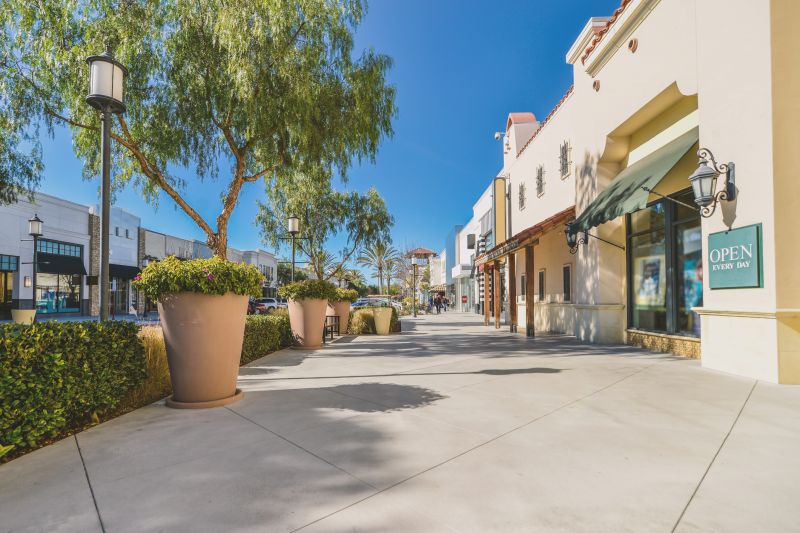Leading Solutions For Concrete Damage Repair And Reinforcement
Select from proven products designed to strengthen and repair concrete structures efficiently and reliably.
 Concrete repairs are a common necessity in maintaining the safety and appearance of structures and surfaces in Bryan, TX. Over time, concrete can develop cracks, spalling, or surface deterioration due to various factors such as weather conditions, settling, or regular wear and tear. Addressing these issues promptly can help prevent further damage and extend the lifespan of concrete surfaces. There are numerous products designed to facilitate effective repairs, each suited to different types of damage and repair scenarios.
Concrete repairs are a common necessity in maintaining the safety and appearance of structures and surfaces in Bryan, TX. Over time, concrete can develop cracks, spalling, or surface deterioration due to various factors such as weather conditions, settling, or regular wear and tear. Addressing these issues promptly can help prevent further damage and extend the lifespan of concrete surfaces. There are numerous products designed to facilitate effective repairs, each suited to different types of damage and repair scenarios.
Top Overall Option
Comprehensive Concrete Repair Kit
A versatile concrete repair kit that includes a variety of patching compounds, crack fillers, and surface restorers designed for multiple repair needs. It offers ease of use and reliable adhesion for both small and large projects, making it suitable for DIY homeowners and professionals alike.
Types of Products For Concrete Repairs
Epoxy Concrete Patches
High-strength epoxy formulations ideal for filling cracks and repairing structural damage in concrete surfaces.
Polyurethane Crack Fillers
Flexible fillers that expand to seal cracks and accommodate slight movements without cracking further.
Hydraulic Cement
Quick-setting cement used for stopping leaks and repairing holes in concrete structures.
Concrete Resurfacing Overlays
Thin layers of concrete or polymer-based overlays used to restore the surface appearance and smoothness.
Fiber Reinforced Patching Compounds
Patching materials embedded with fibers for added strength and durability in repair patches.
Surface Sealers and Waterproofing Agents
Protective coatings that seal repaired surfaces against moisture ingress and weathering.
Crack Injection Kits
Complete kits for injecting sealants into cracks to restore integrity and prevent water intrusion.
Self-Leveling Underlayments
Fluid compounds that create a smooth, level surface for subsequent flooring or finishing.
Concrete Dyes and Colorants
Products used to add color or uniformity to repaired surfaces for aesthetic purposes.
Bonding Agents
Primers that improve adhesion between old and new concrete layers during repairs.
Grouts and Anchors
Materials used to secure fixtures or fill voids within concrete structures.
Patch Repair Mortars
Pre-mixed mortars designed for filling larger damaged areas and restoring shape.
Surface Cleaners and Preparers
Products to prepare concrete surfaces before applying repair materials, ensuring proper adhesion.
Expansion Joint Sealants
Flexible sealants that accommodate movement at expansion joints.
Anti-Slip Coatings
Surface treatments that enhance traction on repaired or restored concrete.
Popular Choices
Trending for their ease of application and effectiveness in sealing small to medium cracks.
Popular for flexible crack filling and sealing applications.
Widely used for quick repairs of holes and leaks in concrete structures.
Favored for creating smooth surfaces in resurfacing projects.
Commonly selected for structural crack repairs and stabilization.
Trend towards protecting and sealing repaired surfaces against moisture.
Popular for blending repairs seamlessly with existing concrete surfaces.
Chosen for their ability to accommodate movement at expansion joints.
Increasing in popularity for restoring large damaged areas efficiently.
Trending for their role in preventing water ingress in repaired concrete.
Gaining popularity for added strength in patch repairs.
Used increasingly to match or enhance the appearance of repaired areas.
Popular for maintaining joint flexibility and integrity.
Essential for preparing surfaces, with high usage in repair projects.
When selecting products for concrete repair, it is important to consider the specific nature of the damage, the size of the area to be repaired, and the desired finish. Some products are formulated for filling cracks, while others are designed for patching larger holes or resurfacing entire sections. Proper preparation, including cleaning and sometimes priming the surface, can significantly influence the success of the repair. Using the right product for the job can help achieve durable, long-lasting results.
In Bryan, TX, where weather fluctuations can impact concrete durability, choosing weather-resistant repair products is particularly beneficial. Many repair compounds and patching materials are formulated to adhere well to existing concrete and resist future damage from moisture or temperature changes. Additionally, selecting products that are easy to work with and cure within reasonable timeframes can streamline repair projects, especially for DIY enthusiasts or professional contractors working on residential or commercial properties.
Overall, understanding the variety of available products and their specific applications can help homeowners and professionals make informed decisions. Properly repaired concrete not only improves safety and aesthetics but also helps maintain property value over time. Whether addressing small cracks or large damaged sections, the right repair products are essential tools in maintaining durable and resilient concrete surfaces in Bryan, TX.
Key Buying Considerations
- Identify the type and extent of damage to select the appropriate product.
- Consider the compatibility of repair materials with existing concrete surfaces.
- Check for weather resistance if repairs are to be exposed to outdoor elements.
- Determine whether the repair requires structural strength or surface restoration.
- Assess ease of application based on your skill level and project size.
- Review curing time to plan your repair schedule effectively.
- Look for products that offer good adhesion to prevent future failures.
- Choose color-matched options if aesthetic blending is desired.
- Evaluate the flexibility of fillers and sealants for areas prone to movement.
- Consider the long-term durability and resistance to moisture or chemicals.
- Ensure the product is suitable for indoor or outdoor use as needed.
- Check for any safety precautions or ventilation requirements during application.
- Review manufacturer instructions for surface preparation and application techniques.
- Determine if additional tools or primers are necessary for optimal results.
- Compare product formulations for compatibility with other repair or finishing products.
